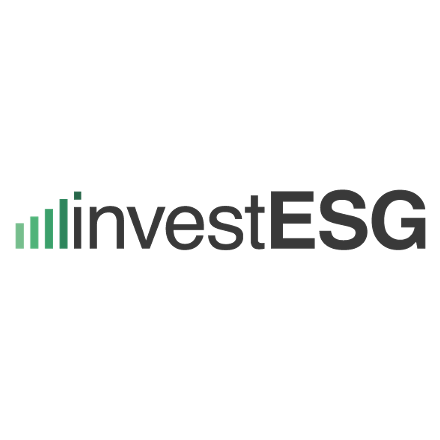

© Matt Duncan
The European sustainable finance regulation has been in the making over the past few years.Besides the most recent surprising developments with reference to the inclusion of nuclear energy and natural gas in the EU taxonmy under certain conditions there are a number of challenges on the road ahead. The following represents a selection of those complexities:Timeline and Data ChallengesThe implementation of the first steps under SFDR consumed a considerable amount of energy among market participants for a rather limited scope of self classification of funds by fund companies. Some market players confused investors by marketing the Art. 8 and 9 classification like quality labels which they are clearly not. Some marketing activities also focused on the relatively high number of funds in those two categories compared to the competition with the aim to raise assets. Although the claim can be challenged these type of business development activities were to be expected in a competitive marketplace.The application date of the RTS under SFDR was delayed but the MiFID II amendments on sustainability preferences will still apply as of August 2022. The Articles 5 and 6 of the taxonomy regulation is still 1 January 2022.The list of Principle Adverse Impact indicators will open up the ESG and sustainbility discussion to a number of new areas for most financial market players: human rights, biodiversity, etc. (refer also to articles on human rights due diligence).Eurosif published a useful infographic on the "Milestones of the EU Taxonomy" and called with other organisations on EU policymakers to "get improved sustainability data by 2024". This confirms the substantial data challenge in the market as corporate data are the source of all following steps of sustainability analysis, reporting and disclosure. How could investors disclose meaningful data to end clients such as pension beneficiaries or insurance policy holders without "real" (and not estimated) corporate data until 2024? On what basis should analysts and rating services base their research without access to real data?The ESAP project is seen as a milestone to improve the availability of high quality sustainability data at a fair price or at no cost as a public good. The implementation of ESAP is one of the projects where time is crucial and every month of delay increases the pressure on market participants who depend on real - and in the future "assured" - sustainability data from companies.Private vs. Listed CompaniesAnother fact is that less than a third of global emissions are caused by companies that are listed on stock exchanges and closely watched by institutional investors (The Economist, 8th January, 2022).Regulators plan to increase the number of companies covered by sustainability disclosure requirements over time - in part via the route of the banking system. Some commentators see this as a revenge of governments on the banking sector for having to bail them out during the great financial crisis.Without clear definitions and guidelines for preparers of sustainability data this could result in substantial reporting costs for small and medium sized companies.Private companies (large and small) are expected to find ways to reduce the reporting burden in the early phase and get more time to prepare compared to listed firms which are followed more closely. Sustainability reporting on fully consolidated investments might differ from equity and bond investments.Private companies will be able to learn from the experience of listed companies. Publicly listed firms might consider going private and delist from stock exchanges or spin of divisions with complex ESG and sustainability issues depending on how the ESG reporting challenges play out over the next few years.Green vs. ReturnInvestors also face the obvious challenge of balancing sustainability objectives and return objectives.This is not new and will be managed by investors on an individual basis. Which index to choose? Excluding coal or managing the allocation to coal exposure and assets as part of the overall carbon budget target given is a question investors have to deal with (see also on the "Comeback role of cole"). Fiduciary duty - to achieve a financial return and/or sustainability objective - as a legal framework is not only different on a country level but even more so on an individual asset owner and investor level.Not underestimated should be the challenge to invest in green bonds or to consider to issue a green bond under the European Green Bond Standard.ESG & Sustainability Approaches: Engagement - Transition - Divestment - Exclusion - Short SellingAnother challenge is the divergence of possible ESG & sustainability strategies. Investors and asset managers can choose among different options depending on their own investment philosophy and strategy.Investors and asset managers can engage with company management and support them on their path towards a more sustainable future. Although good advice is most welcome by companies it is challenging to consider recommendations and perspectives from a large number of asset managers and investors.Companies could select a "time out" and play the "Transition" card to buy more time and find out the best route for their future path. This behaviour and potential tactic will create a specific challenge for regulators, auditors, analysts, investors and asset managers as the transition plan will always be a company specific one. How to value good intentions and uncover those cases where companies just try to avoid the immediate scrutiny?When investors and asset managers get frustrated with the progress reported by the investee company they can divest and sell portfolio holdings. They could also decide to exclude specific companies in the future. The exclusion of whole sectors and industries is not beneficial as it reduces the potential for diversification. The exclusion of companies is nothing special for active asset managers but will be noticed closer in the passive management sphere.The view that short selling is an effective "engagement strategy" is a discussion topic and also applied by hedge fund managers who make use of advanced risk management strategies (see also related interview).The challenges described above are only a small snapshot of issues which exist and which will impact investee companies, analysts, asset managers, investors and their consultants in different ways.In contrast to developing EU regulation market players will also monitor the more pragmatic approach of the UK regulator FCA, the adoption of global standards by CFA Institute and other developers of sustainabilty frameworks and policy makers.The more complicated, the less coordinated along the timeline and the less harmonized the reporting and disclosure requirements are designed the more difficult it will be to navigate the ESG and sustainability road ahead with expected ups and downs. investESG.eu is an independent and neutral platform dedicated to generating debate around ESG investing topics. All opinions expressed are those of the author or contributing source.
Published by
 investESG
investESG
 investESG
investESG

